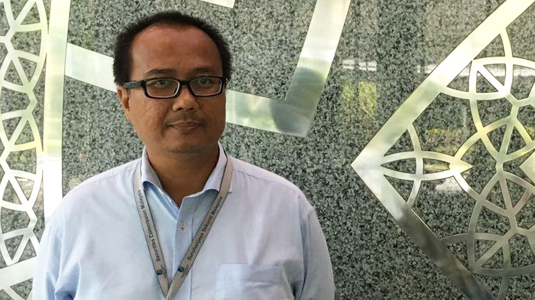KM Practitioner Interview Series: Arief Amron

Arief Amron joined the Securities Commission (SC) Malaysia as Head of Knowledge Management in February 2014. Prior to that, he was with Maybank for 2 years and with Bank Negara for 14 years (of which 5 were in a KM role).
Can you walk us through the current KM initiatives at the SC?
The main bulk of our initiatives is in information management, specifically through the sharing of information via the library. We also disseminate information daily via our enterprise portal. These are mainly internet sources and databases, based around themes like Fintech, governance, leadership and risk management. The themes are guided by our Executive Director. We also look at the SC’s yearly business plan, and see what themes are topical.
We codify tacit knowledge through developing case studies. We conduct Conversation Sessions, where we record interviews with our senior leaders. We have done three so far, with our Deputy Chief Executive as she was retiring.
We organise learning events, such as the annual Merdeka Leadership Series, where we bring in experts to share knowledge with our staff.
We started a KM Practitioner Collaboration Session, where we hosted an introductory workshop on Knowledge Mapping. We did this because we believe that KM cannot be inwardly focused – we need to look at what others outside the SC are doing.
We have started to look at knowledge mapping seriously, and so far it has exceeded our expectations. At Bank Negara, it took much longer as it was done manually. Now, with a software tool we are able to map 18 departments in a short period of time. Currently, we are engaging with those 18 departments and sharing the outcomes of the knowledge mapping exercise.
What are some KM challenges that SC is facing?
Records management (RM) is decentralized, and each department has their own way of managing records. As a result, our management sometimes cannot find important information. You have to go to the respective information owners and ask.
We are obliged to comply with the policies of the National Archives, but last year a few red flags were raised. Our challenge is in raising awareness of this gap with our colleagues. Right now we have 11 departments out of 43 working on RM, granted four of our biggest departments are part of the 11.
The SC started KM in the early 2000s, and management’s and staff’s acceptance of KM is good. The main challenge is in moving forward. Some people are asking, “What’s next?” We see knowledge mapping as an effective way to answer the question. It has already revealed gaps in tacit knowledge and demand for certain types of documents. We need to better manage those documents, by making them more visible at enterprise level.
At the same time, we also face a challenge in shifting paradigm; some people feel that KM is already stabilized so why fix it if it isn’t broken? But I see the SC as being in an ever changing environment, and we need to keep up with the changes.
Technology is limiting us. We are using Sharepoint 2010 and we find ourselves having to work around some of its limitations. There is no social feature like Q&A or Likes, so we are limited to the portal, email and posters to raise awareness of KM.
What future plans do you have for KM at the SC?
We plan to involve the remaining 25 departments in the knowledge mapping exercise. We expect the exercise to throw up some leads on possible interventions, and these will go into our KM plan.
We are planning to run a Knowledge Day to showcase outcomes of our knowledge mapping exercise and to bring in experts to give talks on KM. We are thinking KM for Leaders – to target our senior managers.
We are looking at a taxonomy for Records Management. This will be in collaboration with our Data Management Department, who are working on knowledge discovery of capital markets data in the internet as well as internal, SC content.
We are looking at the ShadowBox technique as a way of replicating the mental model of our experts. However, we face a challenge in finding secondary experts to interview the primary experts.
We plan to build internal competencies and capabilities in KM, not just conceptual but also technical ones.
What advice do you have for fellow KM practitioners?
In the Malaysian context, buy-in from top management is really important. You need to establish relationship with your top management not just to get funding but also to gain access to key business people in the organisation. If you don’t have leadership support, you may risk not knowing what the business wants. Leadership may see things slightly differently, and you want to be aligned with them.
You have to be constantly aware of what’s going on in the business, so that you can link KM to the business. The KM function needs to align with business interests, whether internal or strategic.
You need to share your achievements. What we do is sometimes embedded and could go unnoticed. You should find opportunities to report or share your successes.
Final words?
Never give up; have faith in what KM can do to help your organisation.
Date of Interview: 5 September 2016
0 Comment so far
Commenting is not available in this weblog entry.Comment Guidelines: Basic XHTML is allowed (<strong>, <em>, <a>) Line breaks and paragraphs are automatically generated. URLs are automatically converted into links.
